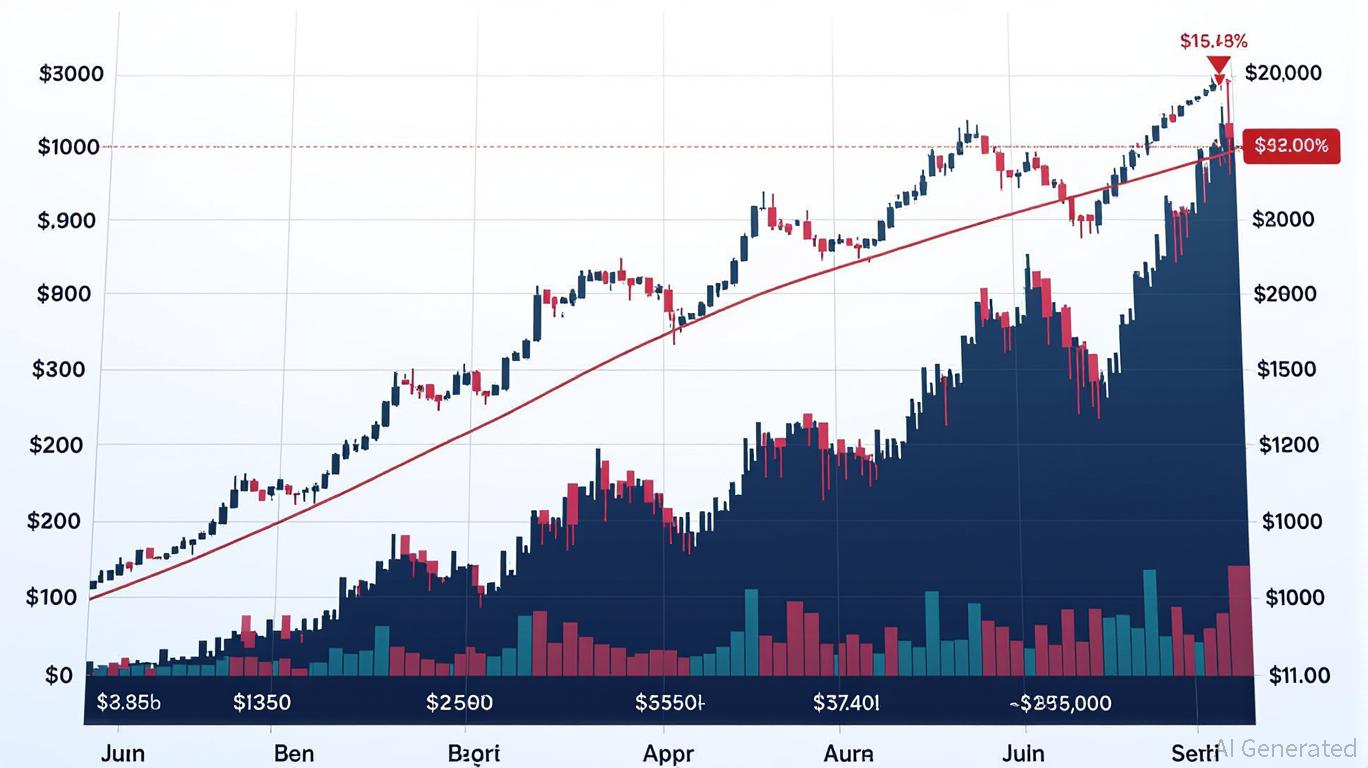Why Deep Learning is Transforming Financial Predictions and Ways Investors Can Benefit from This Movement
- Deep learning is transforming financial forecasting by enabling accurate market predictions through hybrid models like LSTM-CNN and MEMD-AO-LSTM. - Academic research highlights RNNs' dominance in time series analysis while emphasizing the need for interpretable, robust models to bridge theory and practice. - Investors leverage AI-driven strategies (e.g., Numerai's 25% returns) to exploit market inefficiencies, integrating real-time data from social media and blockchain analytics. - Challenges persist in
The Academic Foundation: Deep Learning's Dominance in Time Series Modeling
A comprehensive review by Sofia Giantsidi and Claudia Tarantola, covering 187 Scopus-listed papers from 2023 to 2025, identifies recurrent neural networks (RNNs)—especially long short-term memory (LSTM) models—as the primary tools for financial time series analysis
Giantsidi and Tarantola stress that for practical use, models must be both interpretable and resilient
Real-World Applications: From Stock Markets to Cryptocurrencies
Deep learning has moved from theory to practice in stock market prediction.
With their nonstop trading and high volatility, cryptocurrency markets serve as a proving ground for deep learning’s strengths.
Investor Opportunities: Bridging Research and Action
AI-powered strategies are being embraced by hedge funds and large investors seeking a competitive advantage.
Reinforcement learning (RL) is also emerging as a key area.
Challenges and the Path Forward
Despite these breakthroughs, several obstacles remain.
For those investing, the focus should be on using hybrid models that combine technical analysis, sentiment evaluation, and external data, while ensuring the models remain robust and understandable.
Conclusion
Deep learning represents more than just a tool—it marks a fundamental change in how financial markets are forecasted. By adopting hybrid models, integrating real-time data, and utilizing reinforcement learning, investors can manage the complexities of stocks and cryptocurrencies with unmatched accuracy. As research continues to progress, the main challenge for industry professionals will be turning these technological advances into practical, risk-aware investment strategies.
Disclaimer: The content of this article solely reflects the author's opinion and does not represent the platform in any capacity. This article is not intended to serve as a reference for making investment decisions.
You may also like
Bitcoin Leverage Liquidation Patterns: Managing Risk Amidst Crypto Market Volatility
- 2025 crypto liquidation events exposed leverage risks, with $2B+ daily losses from Bitcoin’s volatility and thin liquidity. - Structural flaws like over-leveraged positions and inadequate buffers worsen cascading price declines during crashes. - Panic selling and herd behavior amplified losses, as seen in Ethereum and Solana’s $239M combined liquidations. - Experts urge diversified portfolios, automated tools, and liquidity-aware strategies to mitigate leverage-driven risks.

Balancer’s $8 Million Recovery Strategy Splits DeFi: Accuracy or Backing the Community
- Balancer DAO proposes $8M recovery plan to reimburse victims of a $116M exploit via proportional BPT-based returns to affected liquidity pools. - Attack exploited a rounding function vulnerability in Stable Pools, bypassing 11 smart contract audits and draining funds through manipulated swaps. - Non-socialized distribution prioritizes precision over community-wide sharing, sparking debates about fairness and governance in DeFi recovery. - Industry experts highlight the incident as a "wake-up call," urgin
Ethereum Updates Today: Bhutan's Strategic Adoption of Ethereum: Leveraging Blockchain for National Digital Identity
- Bhutan stakes 320 ETH ($970,820) via Figment.io, adding 10 Ethereum validators to boost blockchain participation and economic resilience. - The government migrates its National Digital Identity system to Ethereum by 2026, leveraging its security for 800,000 citizens' self-sovereign identity. - Crypto reserves (6,154 BTC, 336 ETH) support the Gelephu Mindfulness City project, aiming to integrate blockchain with sustainable urban development. - Challenges include digital asset volatility and regulatory gap

The Strategic Value of Industrial Properties Amid Upstate New York’s Changing Economic Environment
- New York State's FAST NY and POWER UP programs are driving industrial real estate growth in Upstate through infrastructure grants and power-ready site upgrades. - $283M+ in grants since 2022 has transformed underutilized sites into competitive assets for semiconductors and clean-tech industries. - Corporate campus redevelopments like STAMP Park demonstrate 10%+ property value increases through public-private infrastructure partnerships. - Strategic investments align with semiconductor "superhighway" goal
